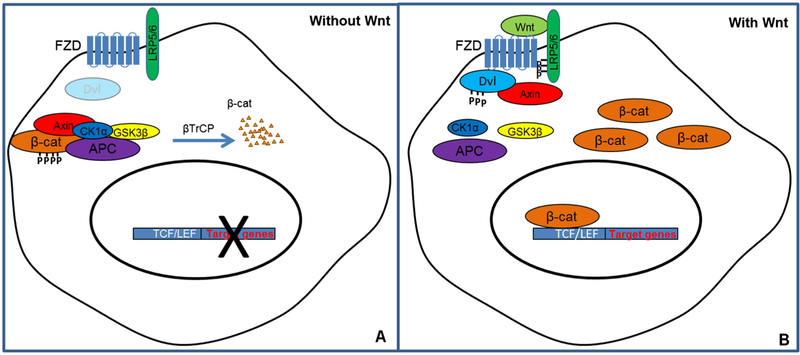Fig. 1.
The canonical Wnt signaling pathway. (A) In the absence of Wnt, β-catenin (β-cat) interacts with the destruction complex formed by a scaffold protein Axin, casein kinase Iα (CKIα) and glycogen synthase kinase 3 beta (GSK-3b) as well as adenomatous polyposis coli (APC), and is constitutively phosphorylated and degraded. (B) In the presence of Wnt, Wnt binds to frizzled receptor (Fzd) and co-receptor low-density lipoprotein receptor-related protein 5 or 6 (LRP5/6). LPR5/6 is phosphorylated, which leads to the recruitment and phosphorylation of Dishevelled (Dvl). Subsequently, Axin is recruited to the receptor complex and the destruction complex is disassembled, blocking the phosphorylation of soluble cytoplasmic β-cat. β-cat is then stabilized and translocates to the nucleus to activate transcription of target genes.

